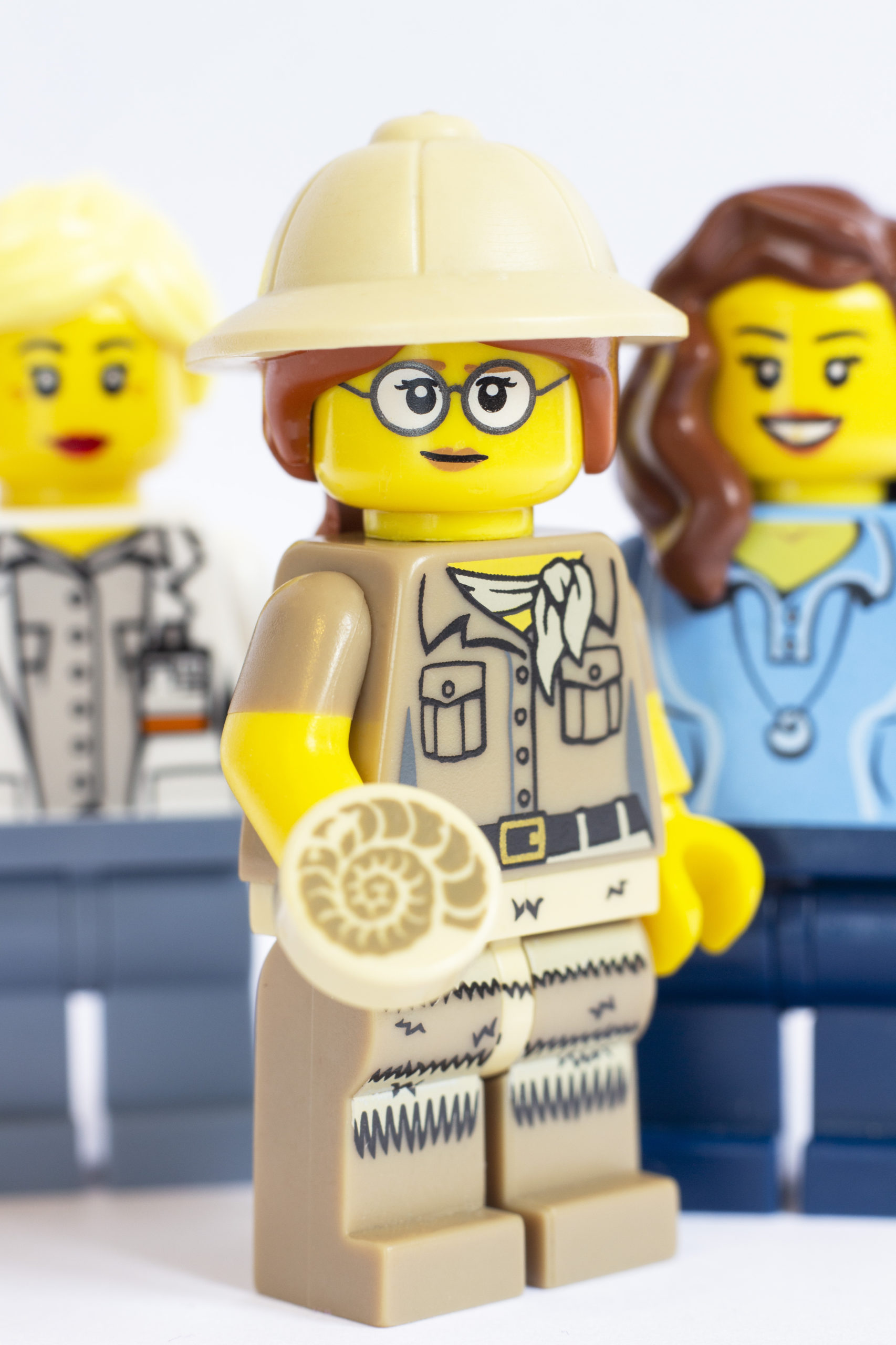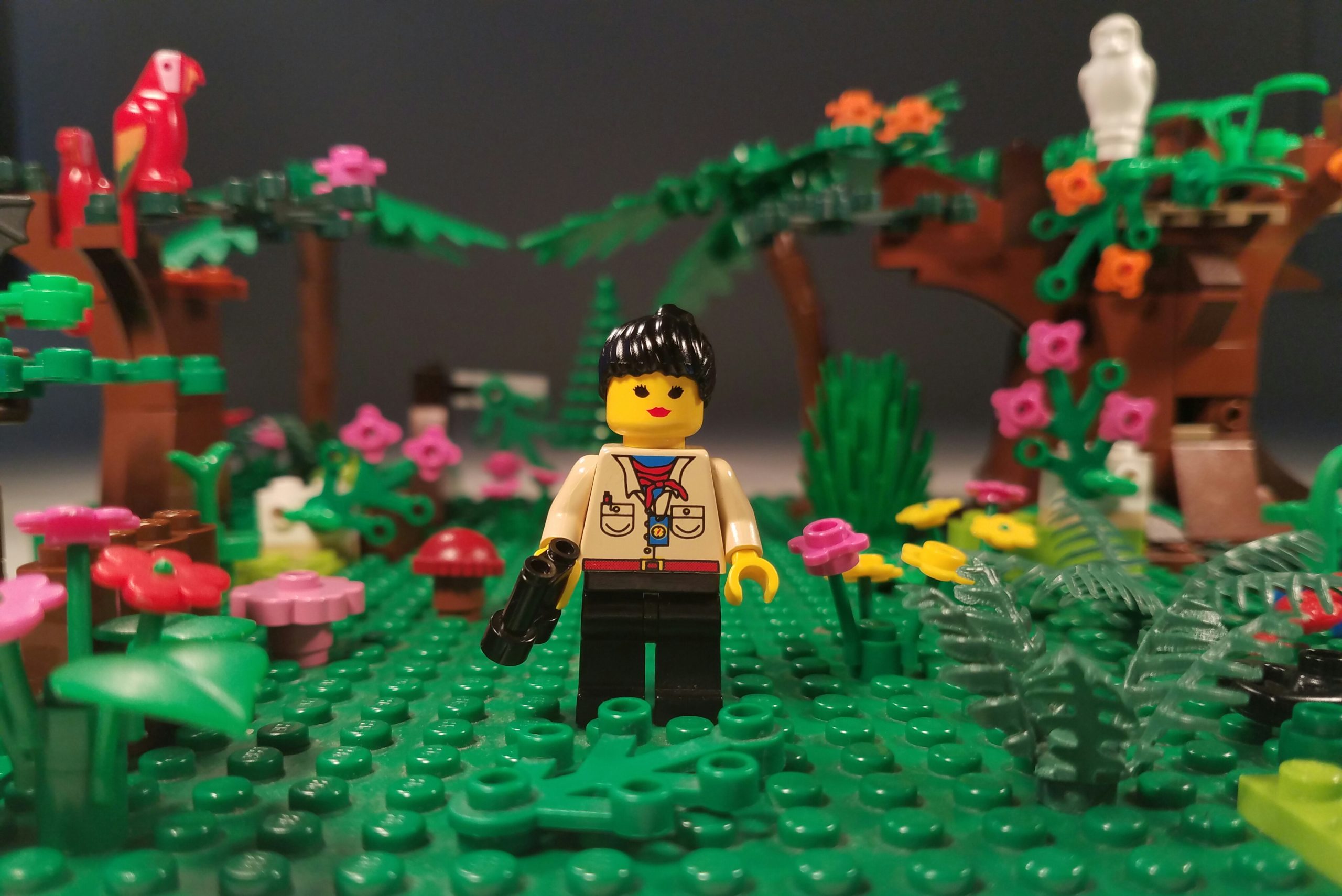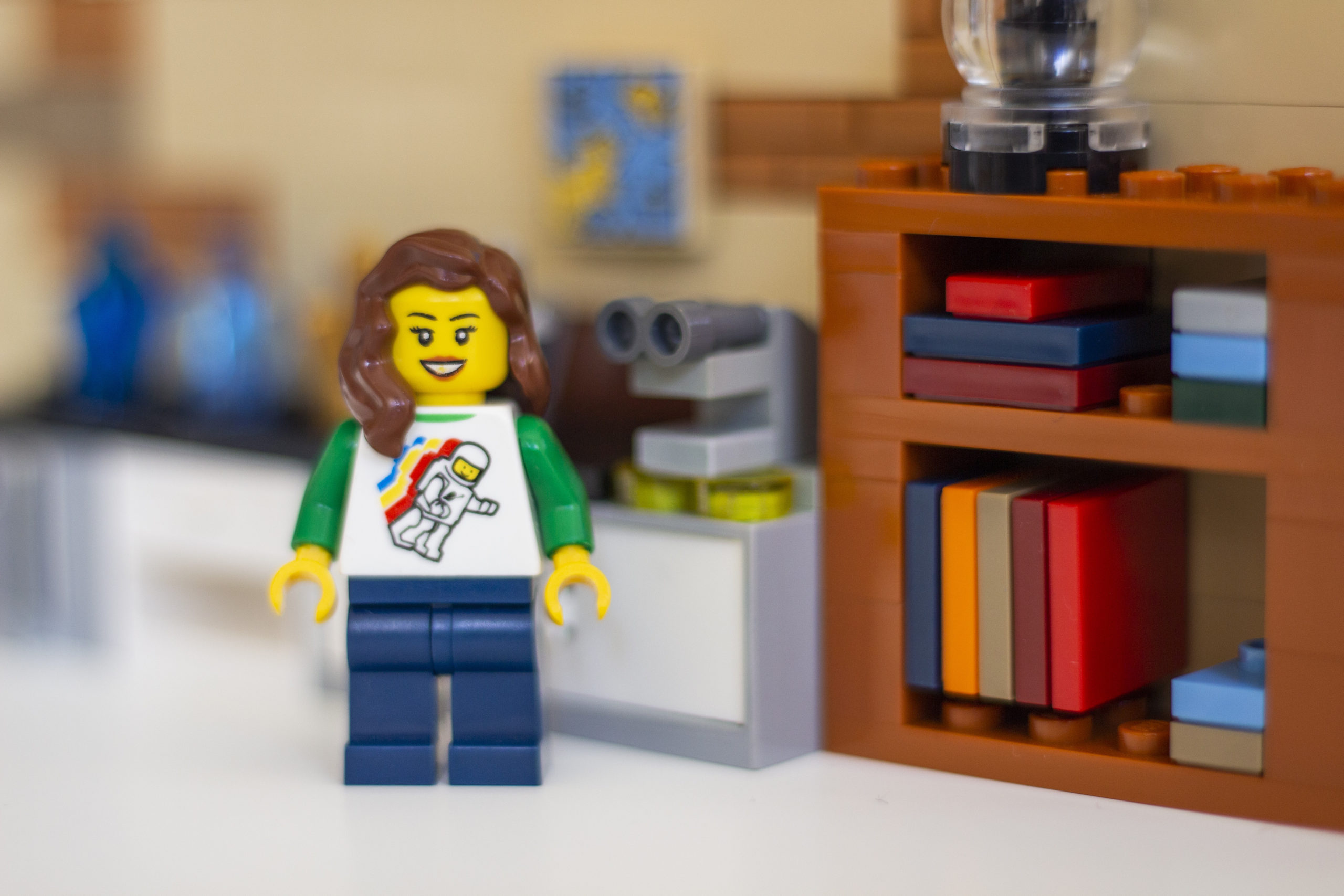In this post, we’re highlighting the work of two scientists who are using a unique medium to communicate their science – LEGO!
Jacinta Humphrey
Hi Lifeology! I’m a PhD Candidate with the Research Centre for Future Landscapes at La Trobe University in Melbourne, Australia. My research focuses on the impacts of expanding urbanisation on bird communities. I’m passionate about making urban spaces more wildlife-friendly & am always looking for new & exciting ways to communicate my research!

Stacy Phillips
Hi everyone! I’m a PhD Geology student, and during my PhD I have been communicating my work using a niche medium: LEGO! I take Lego photographs & make stop-motion animation about my research, but recently I’ve started collaborating with other scientists. I love the challenge of communicating research that I know nothing about and would love to collaborate with a wider range of scientists.

LEGO SciComm Q&A
What do you love about LEGO?
Jacinta: I love how versatile LEGO is! Provided you have the bricks, you can literally create anything, real or imagined. I also love how it works on multiple different scales – you can build life-size models of everyday objects or focus on intricate details surrounding a LEGO minifigure. Finally, I love that LEGO is accessible – you don’t have to be a talented artist to create something amazing out of LEGO. Anyone can build a LEGO model, including kids!
Stacy: I have always loved Lego since I was a kid. It gives you the chance to build and create your own world, limited only by your imagination. When I got back into collecting Lego as an adult I was overawed by the improvements in the bricks, in particular the minifigure faces, they were suddenly so expressive! For me, that’s what moved Lego from simply a brick building toy to a medium that could convey emotions and feelings.

The intricate facial features of LEGO minifigures. Photo by Stacy Phillips.
How did you get into using Lego for Scicomm? Why is this your medium of choice?
Jacinta: Originally, I created my LEGO stop-motion video to enter in the annual Visualise Your Thesis competition. Visualise Your Thesis challenges PhD students to create a 60 second video neatly explaining their research. I wanted to use a medium that would really stand out and grab people’s attention. I chose to work with LEGO as I felt it was something that everyone could connect with. So many people have fond memories of playing with LEGO as a child, and many people have since grown up to watch their own kids play with LEGO. LEGO has been around since the 1930s (although they didn’t start producing plastic bricks until the 1960s) and so it has the potential to speak to multiple generations. I felt this would make my submission unique and memorable.
Whilst I didn’t win the Visualise Your Thesis competition last year, I was fortunate enough to take home the People’s Choice Award for the most popular video. I believe my use of LEGO helped enormously with winning the popular vote!
Stacy: I got back into LEGO as a way of teaching myself about photography and I suddenly found myself a whole community of Lego photographers on Instagram. I was out of science for a period, all whilst building up my following as a photographer on Instagram. When I started my PhD I realised that I could combine all these passions and that I already had a captive worldwide general public audience online. So I started sneaking in photos about science into my social media feeds. Come for the LEGO, stay for the science!
Visualise Your Thesis Competition 2020 – Jacinta Humphrey
How do you come up with your LEGO SciComm ideas?
Stacy: As an earth scientist, a lot of the work that we do is understanding the environment around us, and fieldwork is commonly an important part of that. So when I was given the position of Artist in Residence at the online EGU meeting in 2020 a lot of the images I created were simply fieldwork scenes of scientists atop mountains or investigating landscapes with their equipment. Laboratory scenes work well too.
The really exciting challenge though comes when there is a concept that you want to explain that doesn’t immediately come to mind. Working out analogies to explain your work is a really effective science communication tool and can lead to much more interesting visualisations. Why talk about sedimentation processes in a really dry way when you can put LEGO eyes on some bricks, develop characters with names, and show them growing on the sea-floor?!

Rain Monitoring. Photo by Stacy Phillips.
What can you do with LEGO that is different to other, conventional forms of science communication? Is this a good medium for kids – as well as adults?
Jacinta: For the general public, science can sometimes seem complicated, confusing or boring. Traditional forms of science communication such as published articles fail to connect people with science, as they often use discipline-specific jargon and may only be available to those associated within academic institutions. I hope that by using LEGO to communicate my research, I can challenge existing stereotypes of science and scientists, and help my audience visualise some concepts which are key to my area of research. If people can better understand what scientists are studying and aiming to achieve, I think they will be more likely to support research and take an interest in scientific findings. Having the support of the general public is also particularly important in my field, as the conservation of wildlife in urban areas is heavily dependent on the everyday decisions of people.
When creating this video, however, I especially wanted to engage kids in my science. I hoped that children would be able to understand what my video was explaining, and that it might spark an interest in nature, animals or a future career in science. If one child watched my video and appreciated the birds in their neighbourhood more, or decided that science was cool, then I feel I achieved my goal.

Birdwatching in the Field. Photo by Jacinta Humphrey.
Is it fun to make your videos? How important is it to have fun in your SciComm work (and in life in general)?
Jacinta: Yes, I had a lot of fun putting this video together! It was great to do something different and creative! In my opinion, science communication is all about having fun and showing people just how exciting science can be. It’s so important to find fun in your job and everyday life!
Stacy: They’re really fun to make! Doing stop-motion animation however takes a lot of patience and attention to detail (traits that scientists typically have!) so the longer and more detailed your video the longer it will take to make. I wouldn’t invest that much of my time and effort doing it if I didn’t enjoy it.
When you’re doing science communication, especially when you’re working with LEGO, if you aren’t having fun doing it then your audience won’t have fun watching it! I have a passion for science, LEGO and photography and I find it so rewarding to be able to combine them all.
MicroMountains – 2019 On The Rocks Video Competition (1st place) – Stacy Phillips
When I think of LEGO I feel nostalgia for my childhood. What are your thoughts on whether nostalgia and a childhood-like frame of mind can create more warm and engaging science communication?
Stacy: LEGO works so well as an artistic medium because it instantly puts a smile on people’s face! It evokes exactly that feeling of nostalgia and fun, and that is a very powerful way to get people to listen to your message. And I think it works both ways, science communication is both about telling non-scientists and scientists about your work. When the general public sees a LEGO stop-motion animation because it is fun but they learn science along the way, they’ll remember it because it’s fun. When your fellow researchers see an advertisement for a conference talk on Twitter and LEGO pops up unexpectedly in that scientific forum then it is something a bit different that has instant impact and engagement.

LEGO Researcher in the Lab. Photo by Stacy Phillips.
Does LEGO promote “play” and people discovering science on their own?
Stacy: LEGO has always been a leader in promoting science and engineering concepts through play. You might remember playing with LEGO Technic sets when you were at school, maybe learning about how gears work, or maybe even some of the LEGO Mindstorm robotics kits. Recently they’ve really embraced the usefulness of teaching coding at a young age by introducing the LEGO Boost sets. You can even buy and program an R2-D2 droid these days!
In the more conventional building sets they’ve also been promoting science, notably through their LEGO Space themed sets that were developed with NASA, and their LEGO City Ocean Exploration sets that are supported by National Geographic Explorers. I think it is fantastic that these days you can buy a cool submarine set with a weird fish piece in it, and become inspired to learn about how an angler fish glows at the bottom of the ocean!




